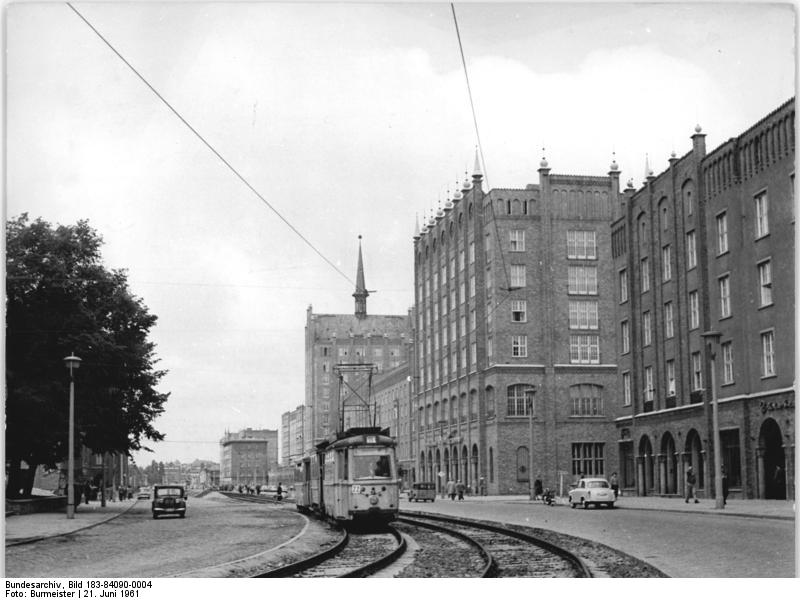If you are a public transport enthusiast, there is a good chance that you are interested in the history of how it all eventually came to be.
Rostock has a long history in how its public transport system developed from small horse-led carriages functioning as trams to the first actual electrified tram in 1904. Some of the old locations, such as abandoned stations, tracks and hints of such – some more subtle than others – can still be seen today. Here is the first part of a list of spots to check out:
1) Rostock Hauptbahnhof
Rostock central station has seen some significant changes throughout the 20th and early 21stcentury. Since the early 1900s, Rostock Central- Bahnhof (as it used to be called until just after the German reunification), had been connected to the tram network. Trains used to terminate just in front of the now northern station entrance; then turn around and head back into the city. Nowadays, the rather extensive and open square in front of this entrance is dominated mostly by taxis and small snack bars. In the early 2000s however, with the expansion into the Südstadt, an underground tunnel was built, located just under the Hauptbahnhof itself, and is the only underground station in Rostock to date, which also gives it a bit of a ‘metropolis-y’-feeling. However, the track layout towards the tunnel has not changed since the early days of the electrified tram and by taking a walk to or from the central station, towards the beginning of the tunnel section, you will be able to imagine just where the old tram lines used to go and terminate.
This video from 1992 also shows perfectly how the layout used to look:
https://www.youtube.com/watch?v=1jbf2hiJElQ
2) Kröpeliner Tor / Hotel Lange Straße
Tram layouts in the city centre have also undergone multiple changes throughout the decades. Some hints of where the former lines used to go can still be found today. Two of them are in close vicinity to each other. Starting with one of Rostock’s tourist attractions, the Kröpeliner Tor, under which, up until 1961, trams actually used to cross, following a single track through the busy Kröpeliner Straße (now known for its shopping as much as its history). In case you have ever wondered why there are so many wide paving tiles leading up the small hill to Kröpeliner Tor – this is why. The tracks themselves, unfortunately, have long been removed. Nowadays, it feels rather surreal imagining actual public transport running through the Kröpi with all the ever-increasing foot traffic. You would probably hear the trams’ bell ringing all the time. Some stunning historic pictures can be found on this German Wikipedia page on Rostock’s trams.
Moving further towards Stadthafen and where the trams now turn onto Lange Straße, pay attention to the shape of the hotel – it is curved; and it is not a design merely taken by choice. The tram used to run right alongside the hotel before moving to its current track layout. You can also take a look at Google Maps satellite imagery where the curvature is even more noticeable.
Stay tuned for part two in where we will have a look at some abandoned stations and places where you can still see some of Rostock trams’ historic rolling stock.
For part two, just click here.

